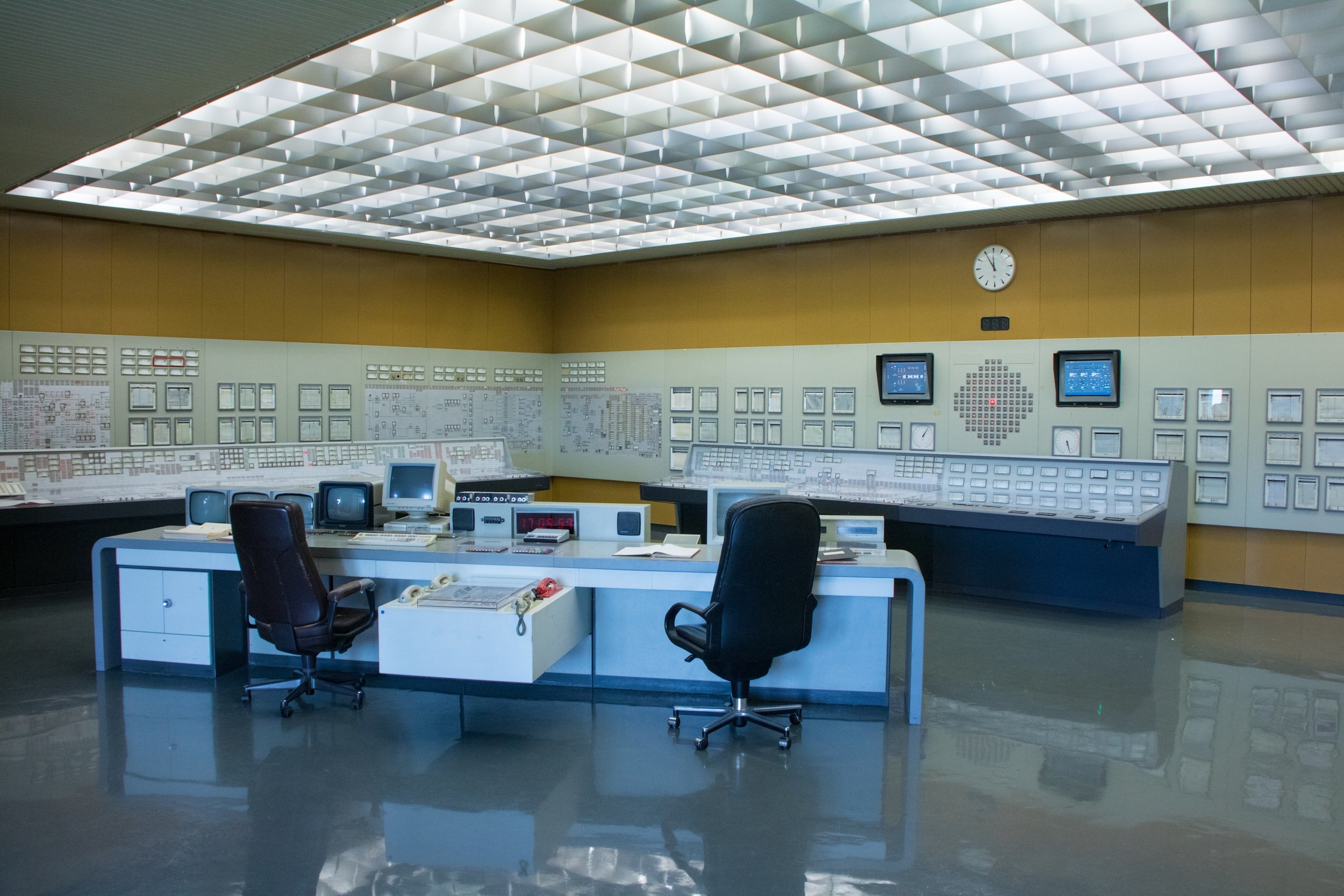Two New Films Discuss Nuclear Energy. Is it a Viable Option for Clean Energy?
The New Fire and Pandora’s Promise are two recent films that discuss next-generation nuclear energy companies and whether nuclear energy is safe and necessary as part of a carbon-free energy future. (http://newfiremovie.com/, http://pandoraspromise.com/) Four concerns people generally have about nuclear energy revolve around safety, waste, proliferation, and cost. The films address these issues among other topics. The main argument for nuclear energy is that it is a clean energy source for baseload energy, i.e. no carbon emissions, and without nuclear, renewable energy sources will not generate enough energy to replace energy production from fossil fuels.
The New Fire is finishing a series of screenings at locations around the globe, http://newfiremovie.com/#screenings. Three new nuclear power companies the film profiles are Oklo Inc., Terrapower, and Transatomic Power Corporation. Oklo is developing small, 2 MW reactors that can fit in shipping containers for off grid locations, (http://oklo.com/). Transatomic is designing molten salt reactors for a safe, clean, lower cost alternative to coal (http://www.transatomicpower.com/). And Terrapower is a nuclear reactor design company funded by Bill Gates that brings together public and private sector research, (http://terrapower.com/).
A big selling point of the next generation nuclear reactors is their ability to use spent fuel from conventional reactors. As of 2012, the U.S. had 70,000 MT of spent waste, (GAO “Spent Nuclear Fuel” Report, August 2012, https://www.gao.gov/assets/600/593745.pdf). While both Oklo and Transatomic claimed their reactors are able to use spent fuel as an input, in 2017 it was revealed Transatomic’s reactor was not able to use recycled fuel as an input (“An Up and Down Week for Developers of Advanced Reactors,” 3/1/17, http://www.theenergycollective.com/dan-yurman/2399452/week-developers-advanced-reactors; “Nuclear Energy Startup Transatomic Backtracks on Key Promises,” https://www.technologyreview.com/s/603731/nuclear-energy-startup-transatomic-backtracks-on-key-promises/). Transatomic also claimed their reactors could generate 75 times the energy per ton of Uranium of current reactors. The math was off in their calculations, their reactors generate twice the energy per ton of current reactors, still an improvement but not the scale that led to investor interest.
Safety & Waste
Molten salt reactors (MSR) such as the type designed by Atomic Energy solve two problems of current reactors, safety and waste. Molten salt reactors use liquid rather than solid rods. The reactors are designed like a bathtub, if the molten salt overheats, the excess heat dissolves a “freeze plug” in the bottom of the tub and the liquid drains into a shielded underground container below the reactor, thus containing the meltdown. MSR’s also take spent fuel from solid reactors as input, although not in the current design by Atomic Energy. (“Meltdown-Proof Nuclear Reactors Get a Safety Check in Europe”, https://www.technologyreview.com/s/540991/meltdown-proof-nuclear-reactors-get-a-safety-check-in-europe/)
Oklo designed a fast reactor. Fast reactors have an inherent safety feature: the reactions slow as the temperature rises. (“Fast Neutron Reactors,” http://www.world-nuclear.org/information-library/current-and-future-generation/fast-neutron-reactors.aspx)
Also, during tests in the 1980’s, fast reactors shut themselves down when they lost coolants. “Even with its normal shutdown devices disabled, the reactor shut itself down safely without overheating anywhere in the system.”
(“Reactors Designed by Argonne National Laboratory,” https://www.ne.anl.gov/About/reactors/integral-fast-reactor.shtml)
Fast reactors also take used fuel as input.
“The idea of fast reactors is to grab more of this energy from the spent fuel of the conventional reactor. And it can do this by repeatedly recycling the fuel through the reactor.” (“Are Fast-Breeder Reactors A Nuclear Power Panacea?” https://e360.yale.edu/features/are_fast-breeder_reactors_a_nuclear_power_panacea.)
In 2008 TerraPower began development of the traveling wave reactor (TWR). The TWR addresses safety, waste, and proliferation issues.
“Unlike traditional nuclear reactors, this technology will be capable of utilizing fuel made from depleted uranium, which is currently a waste byproduct of the uranium enrichment process. Its unique design gradually converts the fuel through a nuclear reaction without removing it from the reactor’s core, eliminating the need for reprocessing, generating heat and producing electricity over a much longer period of continuous operation. Additionally, eliminating reprocessing reduces proliferation concerns lowers the overall cost of the nuclear energy process, and helps to protect the environment by making use of a waste byproduct and reducing the production of greenhouse gases.”
(“TWR Technology: Preparing Nuclear Energy for Global Growth,” http://terrapower.com/technologies/twr.)
Proliferation
Oklo’s reactors use fuel that is not enriched enough for bombs so they are not at risk of causing weapons proliferation. “And these systems use low enriched fuel, so they're not weaponizable material.” Jacob Dewitte (Hearing before the committee on energy and natural resources US Senate 114 Congress, 2nd Session, May 17, 2016. https://www.gpo.gov/fdsys/pkg/CHRG-114shrg22127/html/CHRG-114shrg22127.htm)
Transatomic Power reduces the risk of proliferation because Transatomic’s reactor:
“(1) eliminates the need for new enrichment facilities; (2) it eliminates the need for new reprocessing facilities; and (3) it eliminates stockpiling of spent nuclear fuel and slowly reduces inventories from the past.”
(Transatomic Power, Technical White Paper, March 2014, volume 1.0.1 http://large.stanford.edu/courses/2015/ph241/khalaf1/docs/TAP_White_Paper.pdf)
As stated in “TWR Technology: Preparing Nuclear Energy for Global Growth,” above, Terrapower’s TWR limits proliferation risk, “eliminating reprocessing reduces proliferation concerns.”
Cost
According to Oklo’s CEO, “this system has the potential to reduce these customers’ energy bills by up to 90%.”
(Written Testimony of Dr. Jacob DeWitte CEO and Co-Founder, Oklo Inc. Before the Committee on Energy and Natural Resources United States Senate, Status of Advanced Nuclear Reactor Technologies, May 17, 2016. https://www.energy.senate.gov/public/index.cfm/files/serve?File_id=3BA637BA-6A6C-4DF9-9C7F-A0A2BBF8D8E0)
Transatomic Power reduces the capital costs of building a nuclear energy plant. “Transatomic says it can split the difference, building a 500-megawatt power plant that achieves some of the cost savings associated with the smaller reactor designs. It estimates that it can build a plant based on such a reactor for $1.7 billion, roughly half the cost per megawatt of current plants.”
(“Safer Nuclear Power, at Half the Price,” https://www.technologyreview.com/s/512321/safer-nuclear-power-at-half-the-price/)
Terrapower’s TWR also shows cost savings. “The TWR is projected to have a levelized cost of electricity that is lower than that of LWRs being built today.”
(“The Traveling Wave Reactor: Design and Development,” March 31, 2016, http://terrapower.com/uploads/docs/ENG-15115-JG.PDF)
The next-generation nuclear energy companies claim to improve safety, reduce waste, limit the risk of proliferation, and lower costs. Do you agree? What factors and risks are they not addressing?
We welcome your thoughts and comments.

